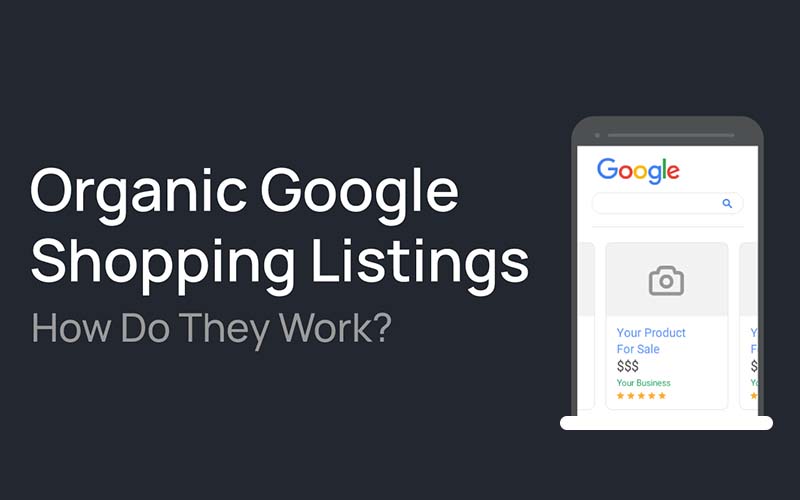Introduced worldwide at the end of October 2020, Google expanded their Shopping Ads into unpaid organic listings to help combat the rising growth of Amazon and their product search capabilities. This change has benefited consumers, and also businesses who are now able to promote products for free across the world’s largest search engine. Nevertheless, as with any marketing strategy, it is vital to understand how organic shopping ads work in order to use them effectively.
How Organic Google Shopping Listings Work
The first thing to note is that organic Google Shopping listings appear differently to their paid counterparts. Paid Google Shopping Ads appear at the top and bottom of the SERPs and are indicated with the phrase “ads” shown above them. Organic Google Shopping Ads on the other hand are only visible in the shopping tab on Google, meaning that visibility is lower.
Paid and organic Google Shopping listings are also displayed differently to potential customers. Paid ads include an image of the item, a description, price, the company selling the product and sometimes product reviews (in the form of star ratings). The organic options follow the same pattern, but when a user clicks on the product tile, they are able to see different colour variations of the product, compare prices (if available on multiple websites) and read the product description. When considering organic Google Shopping Ads it is important to optimise all of these various aspects to ensure that Google can correctly serve your products in relevant searches and to provide the best chance of getting a potential customer to convert.
So how does Google determine which products appear? Unlike Google Text Ads which utilise keywords to determine which ads are shown to a user. Google looks at product information to determine which Google Shopping ads (both paid and organic) are relevant for consumers. However, when creating product details, such as descriptions, be sure to implement some keywords to provide the best chance of your product matching key product search phrases. For example, if you sell a red hat and notice that the term “bright red hat” is used a lot in searches then changing the description from “red hat” to “bright red hat” can have a positive effect on visibility in shopping results.
Organic Google Shopping Listings Setup
Follow these steps when setting up your organic Google Shopping listings:
1. Ensure Google Merchant Centre is Setup
To run any Shopping Ads on Google (organic or paid) it is first necessary to set up a Google Merchant Centre account. Google Merchant Centre allows for management of all your products across Google Shopping Ads and any other Google services that are utilised.
2. Create a Product Feed
Once a Merchant Centre account has been created, information on your products such as pricing, sizing and descriptions then need to be imported. This can be done by one of two ways, the first is by manually uploading a product list with all relevant product information. This product list is created in Google Sheets and then uploaded to the Merchant Centre so that updates are automatically imported. The second option is through the use of a third party (ex. WooCommerce or Shopify), who upload your product feed to Google. Finally, to ensure your products only appear under free listings it is important when creating this feed to only select “surfaces across Google” under destinations, as other options involve payments to Google.
3. Monitor listings
Progress of your free listings can be monitored in the Google Merchant Centre. Be sure to consistently check on how your products are performing in the market compared to competitors. If your products aren’t appearing as regularly when you search for them, look to re-evaluate your product’s description, imagery or even product headline.
Organic Google Shopping placements present a great opportunity for businesses to grow their exposure across Google. Even though the visibility of these types of ads can be limited compared to their paid alternatives, organic ads can provide a budget friendly alternative for many businesses looking to stay top of mind of consumers.
To find out more about how organic Google Shopping listings can benefit your business, talk to the ecommerce professionals at Redline Digital.
